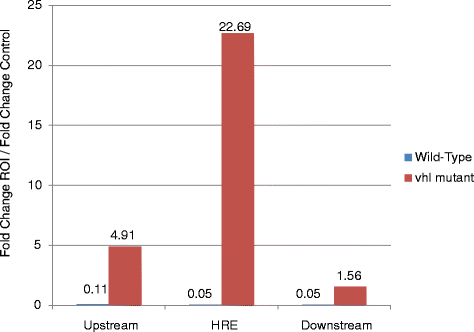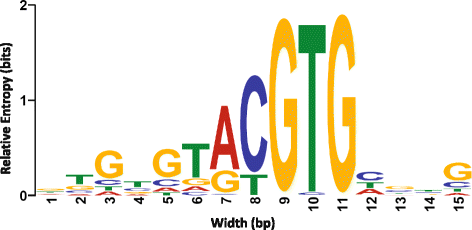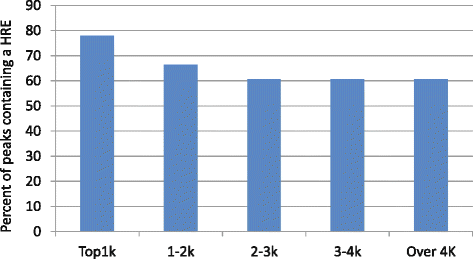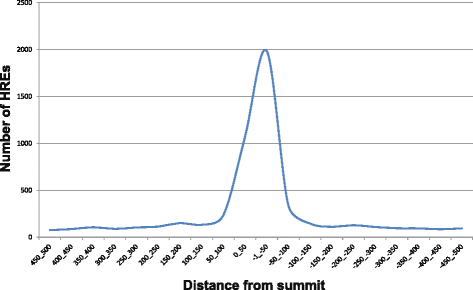Genome-wide mapping of Hif-1α binding sites in zebrafish
- PMID: 26559940
- PMCID: PMC4642629
- DOI: 10.1186/s12864-015-2169-x
Genome-wide mapping of Hif-1α binding sites in zebrafish
Abstract
Background: Hypoxia Inducible Factor (HIF) regulates a cascade of transcriptional events in response to decreased oxygenation, acting from the cellular to the physiological level. This response is evolutionarily conserved, allowing the use of zebrafish (Danio rerio) as a model for studying the hypoxic response. Activation of the hypoxic response can be achieved in zebrafish by homozygous null mutation of the von Hippel-Lindau (vhl) tumour suppressor gene. Previous work from our lab has focused on the phenotypic characterisation of this mutant, establishing the links between vhl mutation, the hypoxic response and cancer. To further develop fish as a model for studying hypoxic signalling, we examine the transcriptional profile of the vhl mutant with respect to Hif-1α. As our approach uses embryos consisting of many cell types, it has the potential to uncover additional HIF regulated genes that have escaped detection in analogous mammalian cell culture studies.
Results: We performed high-density oligonucleotide microarray analysis of the gene expression changes in von Hippel-Lindau mutant zebrafish, which identified up-regulation of well-known hypoxia response genes and down-regulation of genes primarily involved in lipid processing. To identify the dependency of these transcriptional changes on HIF, we undertook Chromatin Immunoprecipitation linked next generation sequencing (ChIP-seq) for the transcription factor Hypoxia Inducible Factor 1α (HIF-1α). We identified HIF-1α binding sites across the genome, with binding sites showing enrichment for an RCGTG motif, showing conservation with the mammalian hypoxia response element.
Conclusions: Transcriptome analysis of vhl mutant embryos detected activation of key hypoxia response genes seen in human cell models of hypoxia, but also suppression of many genes primarily involved in lipid processing. ChIP-seq analysis of Hif-1α binding sites unveiled an unprecedented number of loci, with a high proportion containing a canonical hypoxia response element. Whether these sites are functional remains unknown, nevertheless their frequent location near transcriptional start sites suggests functionality, and will allow for investigation into the potential hypoxic regulation of genes in their vicinity. We expect that our data will be an excellent starting point for analysis of both fish and mammalian gene regulation by HIF.
Figures





References
MeSH terms
Substances
Associated data
- Actions
- Actions
- Actions
LinkOut - more resources
Full Text Sources
Other Literature Sources
Molecular Biology Databases
Research Materials
Miscellaneous

